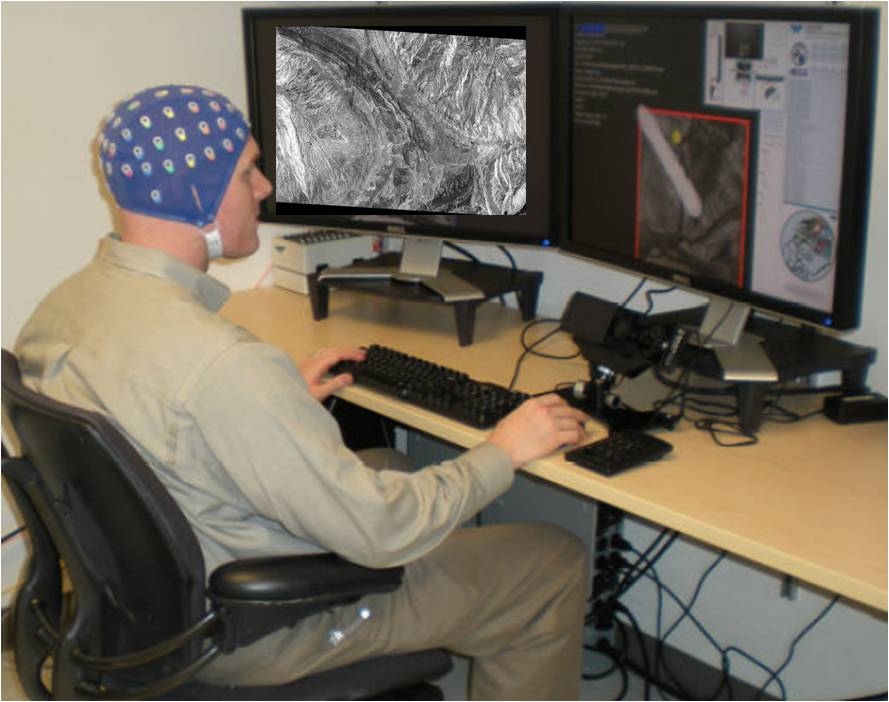From bench to bunker
July 12, 2012 | Source: Chronicle of Higher Education
Neurotechnology for Intelligence Analysts (NIA), being developed through a collaboration between the Defense Advanced Research Projects Agency and a private company called Neuromatters, aims to use the EEG P300 effect to allow military analysts to sort through hundreds of satellite images for a target structure, eliminating worthless images in seconds and speeding up review by orders of magnitude.
Neuromatters claims to have achieved a 300-percent increase in the speed of image analysis.
According to the program manager for the DARPA project, William Casebeer, “Taking advantage of the massively distributed parallel-processing capabilities of the human brain by sensing when it has detected anomalies in images could be an important part of a comprehensive approach for dealing with the deluge of data our intelligence analysts deal with each day. Testing of promising prototype NIA systems is ongoing so we can make fully-informed transition decisions.”
Other projects DARPA finances include one to test whether sending electricity through the brain can accelerate learning; another that seeks to use psychology and neuroscience to understand which types of communication best convince those living in occupied lands that they should yield to American forces, a sort of Propaganda 2.0; and a project aimed at developing drugs that would reduce or erase traumatic memories.
